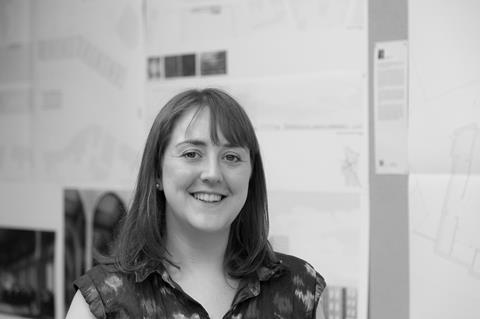ARB’s proposals to ‘shake-up’ the architectural education system are well intentioned, but won’t deliver the change we need, writes Eleanor Jolliffe

Architectural education reform is long overdue, I don’t think anyone would disagree on this. ARB, after two years of policy development, released their proposals for an education “shake-up” for consultation last week. I have read them and spoken with ARB. I can see the intention was good; but I do not think the proposals will have the desired impact. Based on my understanding I think the proposals represent a missed opportunity to effect real change.
The current qualifications are prescribed to Parts I, II and III. This comprises a level 6 qualification (Part I), a level 7 qualification (Part II) and a period of monitored/ examined professional practice (Part 3). A minimum of two years professional practice must be recorded in order to register as an architect. Overall, this means a minimum of seven years of training and fees to reach registration – although most architects currently take just over nine years.
My understanding of the new proposals are that a hopeful architect will need a postgraduate (Level 7) qualification in architecture (duration to be decided by provider, but let us say one to two years); and a minimum of one year in monitored professional practice. Overall, a total minimum of two to three years of training and fees. Now while this is, in theory, drastically different the devil, as ever, is in the detail.
We are now back up to at least five to six years of training and fees. Not so very different to the current situation
At this point I will state very clearly that ARB are a statutory body and do not have the power to design a syllabus, decide on course length etc. Their role is to accredit qualifications designed and offered by education providers (e.g. universities).
In the paragraphs above the difference appeared startling – four or five fewer years of training and fees. Why would I suggest this is a missed opportunity? This is significant change. However, ARB asks for a level 7 (L7) qualification for their academic outcomes. This is a postgraduate level qualification. Entry to a L7 qualification for any educational provider is unlikely to be directly following A-levels.
So let us add back in an undergraduate degree (usually three years). We are now back up to at least five to six years of training and fees. Not so very different to the current situation – in fact the duration of full-time university fees is highly likely to be no different at all. Though note that this is all hypothetical as no education providers have as yet come forwards with their suggested courses.

Let us now suppose a university is happy to accept a graduate of any degree onto this new L7 course. Are we as a profession comfortable with the notion that architecture can be competently taught in one to two years of postgraduate level study and a year’s experience in practice?
Personally, this makes me uncomfortable. One of the problems I see in current education is a lack of technical content – I do not see that reducing the length of both accredited academic and professional experience will do anything to make this situation better.
Now there are other routes to L7 perhaps. I am aware of the existence of integrated masters degrees (four year undergraduate courses that give a L7 qualification). Additionally there has been much talk of apprenticeships in the past few years. Perhaps these may offer an “earn as you learn” route?
Many firms do not have the capacity to take apprentices straight from A-level
Let us first put aside the question of the less quantifiable benefits of going to university (becoming more independent, meeting new people from other backgrounds, living away from home, expanding your horizons, immersing yourself in an educational atmosphere etc. etc.). Last year 8,020 students enrolled onto an architecture course. There are 42,170 architects in the UK.
If, say, half of all architecture students wanted to enrol on an apprenticeship, then this would mean roughly one apprentice per ten architects in practices across the UK each year… which would drastically change UK architecture. Many firms do not have the capacity to take apprentices straight from A-level; not to mention the policing that would have to take place to ensure educational outcomes were consistent across all practice types and sizes.
The route to registration for your average 18-year-old I would therefore suggest looks likely to still be almost as long and expensive under the new proposals as the old ones.
The current ARB proposals don’t seem to even try to offer a brighter, more competent or “better” future for architectural training
Of course, if you are changing careers in later life, or an architectural technician looking to register as an architect the new proposals do seem likely to drastically change things and offer shorter routes to registration. It will create significantly greater accessibility for these groups – this is long overdue, and is to be welcomed.
I have spent the last three years writing a book that charts 3,000 years of architectural practice and education (available now from RIBA Books, if you’ll excuse the shameless plug!). Every generation or so we reform architectural education. It’s usually aspirational and well intentioned; there is a vision of a better standard for the profession. Sometimes it really helps, but more often than not there are unintended consequences.
However, I do not see reform or aspiration in the ARB proposals currently before us. I see a well meaning change of nomenclature. The current ARB proposals don’t seem to even try to offer a brighter, more competent or “better” future for architectural training, just a slightly modernised one. Combine this with the likelihood of little change to course duration or cost… it just doesn’t seem worth the effort.
Also read >> Parts I, II and III will be abolished under ARB educational reforms
Also read >> RIBA president says ARB proposal to scrap parts I, II and III ‘does not go far enough’
















8 Readers' comments